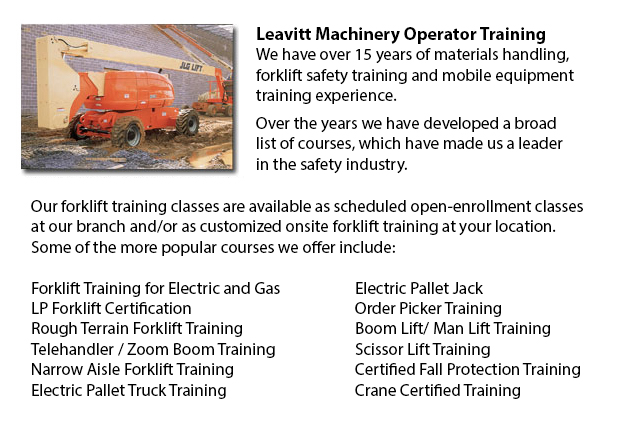
Boom Lift Safey Training Marysville - Boom lifts are a type of elevated work platform or aerial lifting device which are normally utilized in warehousing, construction and industry. Boom lifts could be used in virtually any environment due to their versatility.
The elevated work platform is utilized in order to enable access to heights which were otherwise inaccessible making use of other means. There are risks inherent when using a boom lift device. Workers who operate them should be trained in the right operating techniques. Accident avoidance is vital.
The safety aspects that are included in boom lift operation are covered in our Boom Lift Training Programs. The course is best for those who operate self-propelled elevated work platforms and self-propelled boom supported elevated work platforms. Upon successfully finishing the course, participants will be issued a certificate by somebody certified to confirm finishing a hands-on evaluation.
In order to help train operators in the safe utilization of elevated work platforms, industry agencies, local and federal regulators, and lift manufacturers all play a part in providing the necessary information and establishing standards. The most important ways in preventing accidents related to the utilization of elevated work platforms are as follows: inspecting machines, having on safety gear and performing site assessment.
Key safety factors when operating Boom lifts:
Operators must observe the minimum safe approach distance (or also called MSAD) from power lines. Voltage could arc across the air to be able to find an easy path to ground.
A telescopic boom should be retracted prior to lowering a work platform to be able to maintain stability as the platform nears the ground.
Boom lift workers must tie off to ensure their safety. The lanyard and safety tools have to be attached to manufacturer provided anchorage, and never to other wires or poles. Tying off may or may not be necessary in scissor lifts, that depends on specific local rules, employer guidelines or job risks.
Avoid working on a slope that goes beyond the maximum slope rating as specified by the manufacturer. If the slop exceeds requirements, then the machine must be transported or winched over the slope. A grade can be measured easily by laying a minimum 3-feet long straight board or edge on the slope. Afterward a carpenter's level can be laid on the straight edge and the end raised until it is level. The percent slope is attained by measuring the distance to the ground (the rise) and then dividing the rise by the length of the straight edge. Afterward multiply by 100.
-
Manlift Safety Training Marysville
Manlift Safety Training Marysville - It is important for experienced Manlift operators to be aware of the connected hazards which come with particular types of scissor lifts. They must be able to operate the scissor lift in a way that protects not on... More -
Forklift Operator Certification Marysville
Forklift Operator Certification Marysville - Forklift operator certification is normally required for employees working in industrial, warehouse or construction environments to guarantee the safe utilization of forklifts. Workplace training need to f... More -
Crane Training School Marysville
Crane Training School Marysville - The crane training school offers industry-relevant programs. Courses provide trainees with learning outcomes that match present industry demands. Our small class sizes combine hands-on experience and theory. Our ind... More -
Heavy Equipment Training Marysville
Heavy Equipment Training Marysville - Normally, the different kinds of heavy equipment training are divided into 2 categories of machines: those that have rubber tires and tracked vehicles. Tracked vehicles comprise items like cranes, bulldozers and... More -
Counterbalance Forklift License Marysville
Counterbalance Forklift License Marysville - Forklifts, when operated by fully trained workers, are a major advantage to companies. We provide a thorough training program covering all aspects of operating a powered lift device. Counterbalance forklif... More -
Aerial Lift Training Marysville
Aerial Lift Training Marysville - An aerial work platform is a mechanical access platform. This particular machinery provides access to otherwise not accessible areas for equipment or people. Likewise called an elevating work platform or aerial devic... More -
Aerial Boom Lift Training Marysville
Aerial Boom Lift Training Marysville - For people who operate or supervise the utilization of aerial lift platforms, right aerial boom lift Training is necessary. The aerial lift platform is for lifting people, materials and tools to elevated work lo... More -
Bucket Truck Training Marysville
Bucket Truck Training Marysville - The bucket truck training program is a program that is intended to effectively train operators who are qualified so they could decrease the risk of personal injury and incident when working with or in close proximit... More

Forklift Training Marysville
TOLL FREE: 1-888-254-6157
Marysville, Washington
forklifttrainingmarysville.com
Email Us
About Us


